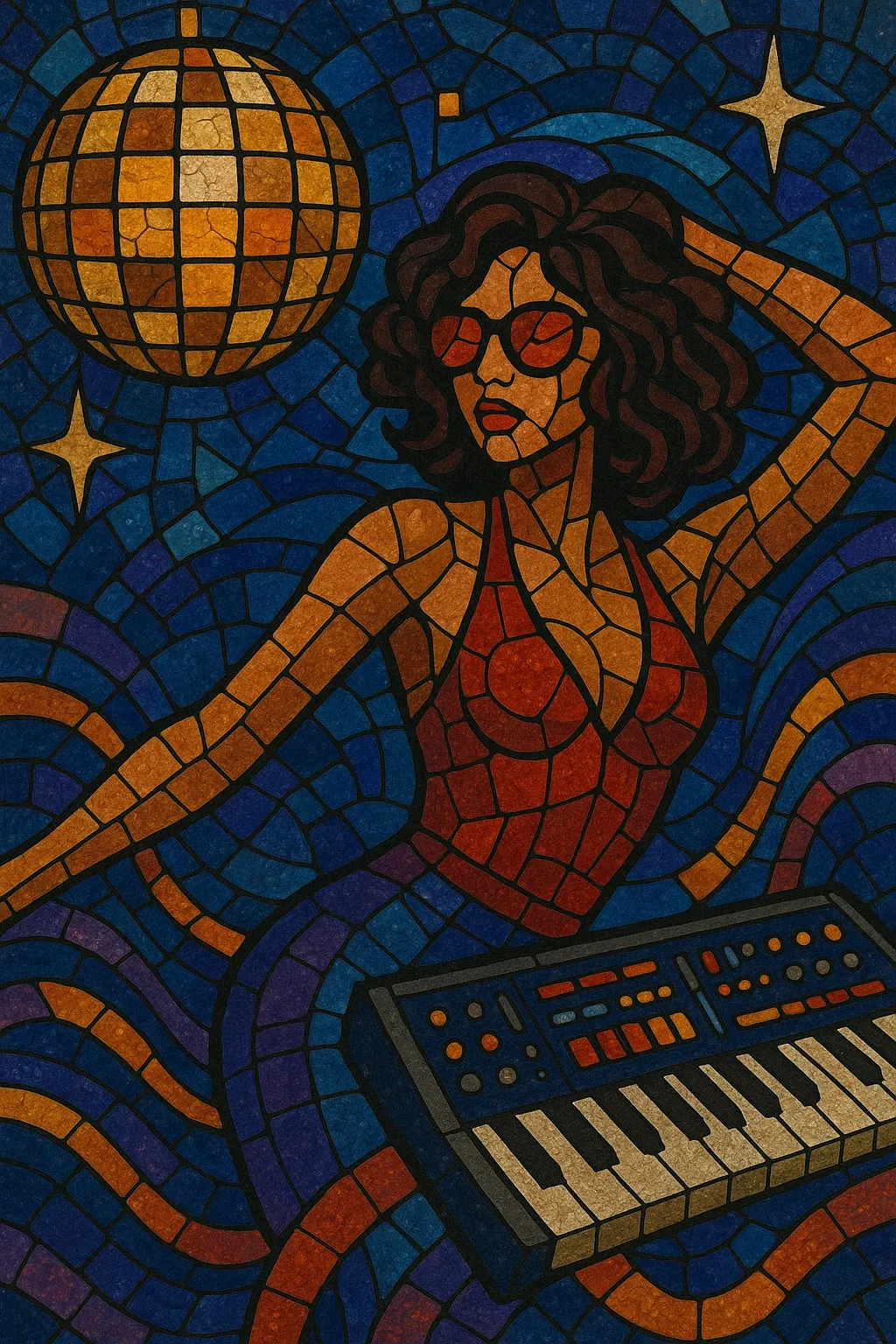Euro-disco is a European-driven branch of disco that emerged in the mid-to-late 1970s, centered around studio hubs in Germany (especially Munich), France, and Italy.
It is characterized by a steady four-on-the-floor beat, sequenced or arpeggiated synthesizer basslines, lush string arrangements, glossy production, and hook-heavy, often minor-key melodies.
Compared with American disco, Euro-disco leaned more heavily on electronic textures and motorik repetition, creating a sleek, futuristic feel that became a template for later electronic pop and dance music.
Lyrically and thematically it favors romance, nightlife escapism, and space-age or cosmopolitan imagery.
The term is also used more broadly for a closely related 1980s wave (sometimes styled “Eurodisco”) associated with polished German and pan-European productions.
Euro-disco arose as Europe’s take on U.S. disco, quickly developing its own identity through the “Munich sound” led by producers like Giorgio Moroder and Pete Bellotte. Their work—famously including the synthed-out, sequencer-driven approach exemplified by Donna Summer’s I Feel Love (recorded in Munich)—signaled a pivot to electronic textures that became emblematic of Euro-disco. In parallel, France nurtured lavish, percussion-rich productions via Cerrone and the cosmic, synthesizer-forward group Space, while Italy contributed glossy studio projects such as La Bionda.
By 1977–1979 the style was dominant on European charts. Germany-based Boney M. (produced by Frank Farian) fused Caribbean-flavored vocals with tight Euro-disco arrangements, while Silver Convention, Arabesque, and Sheila & B. Devotion delivered streamlined, chorus-driven hits. These productions emphasized four-on-the-floor kick drums, octave-skipping basslines, string pads or orchestral flourishes, and memorable refrains tailored for clubs and radio.
As the 1970s closed, Euro-disco’s electronic emphasis fed directly into early 1980s pop-dance sounds. In Germany, producers like Dieter Bohlen shaped a glossy, vocal-forward Eurodisco aesthetic with acts such as Modern Talking. Meanwhile, Italy’s increasingly synth-centric scene would crystalize as Italo disco, and the intensified, faster club sound coalesced as Hi-NRG.
Euro-disco profoundly influenced synth-pop, house and techno (producers often cite Moroder’s sequencer-first approach), and later European club movements. Its melodic sensibility and glossy electronics resurfaced in the 1990s French house scene and in 2000s–2010s nu-disco revivals, while its spacey, cinematic strain informed synthwave’s retro-futurist palette.


